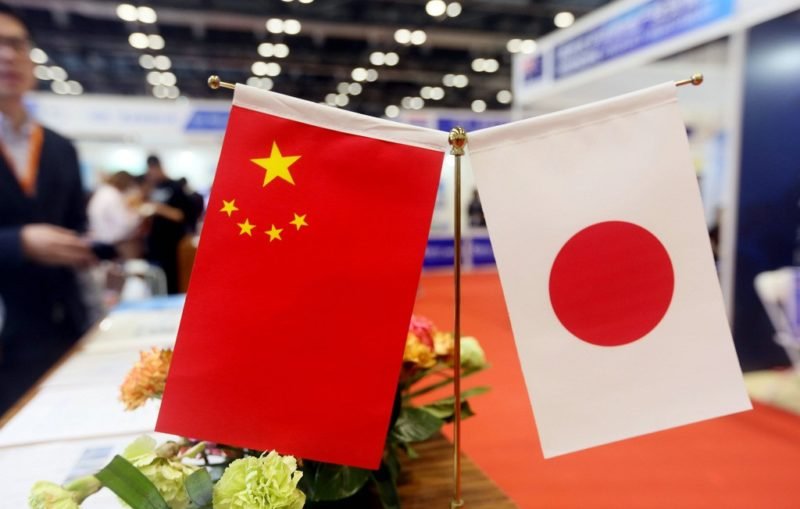The China-Japan Economic Relationship Is Getting Stronger

“If the relationship between China and the United States, the world’s two largest economies, is the most important relationship in the world, then arguably the second most important relationship is that between China … and its neighbour, Japan, the third-largest economy,” wrote distinguished East Asia expert, Ezra Vogel.
Indeed, Japan and China have been closely intertwined for more than 1,500 years through economic, cultural and political connections, perhaps longer than any other two countries.
Hot Economics, Cold Politics

In recent times, political relations between Japan and China have suffered from conflict, different interpretations of history, territorial disputes and Japan’s close political relationship with the U.S. But since the opening of China to the world economy in 1978, business and economic connections between these two countries have blossomed, thanks to their geographical proximity and natural complementaries.
China’s rising middle class provides a welcome market for a Japan mired in demographic stagnation, while Japan’s advanced technology offers many benefits to China, including essential components for companies like Huawei and products that China assembles on behalf of companies like Apple. The Japan-China relationship is often described as “hot economics, cold politics.”
A major rebooting of the Japan-China economic partnership occurred in 1978, when Chinese Vice Premier Deng Xiaoping visited Japan, the first-ever visit of a Chinese state leader.
Massive Technology Transfer
Vice Premier Deng Xiaoping visited a Panasonic TV factory in Osaka and said to company founder Kōnosuke Matsushita, “Mr Matsushita, you are called the god of management in Japan. Would you be willing to help us advance the modernization of China?” The founder immediately responded, “We will do whatever we can to contribute to the modernization of China.”
Throughout the 1980s, Mr Matsushita transferred technology, trained Chinese workers and otherwise helped China modernize its industry through 150 separate projects. China learned how Mr Matsushita made everything from electric irons to transformers and semiconductors.
Panasonic’s investment in China was just the beginning of the wave of Japanese investment in China. The total stock of Japanese foreign direct investment in China stood at some $124 billion at the end of 2018, with about 23,000 Japanese companies now having operations in China.
Japan’s Biggest Trading Partner
In the early days, Japanese manufacturing companies in the motor vehicle, electronics and heavy industries were taking advantage of China’s low-cost structure. But today, the buying power of China’s emerging middle class is a growing attraction for Japanese companies.
With such a strong investment relationship, it is not surprising that China has also become Japan’s most important trading partner.
Trade has increased from $1 billion to some $317 billion over the past 45 years and now represents more than 20% of Japan’s total trade — even though it has suffered recently from the U.S. administration’s trade war and China’s slowdown. Japan is also China’s third-largest trading partner. The recent agreement by 15 regional economies, including both Japan and China, for the Regional Comprehensive Economic Partnership, will only improve the foundations for trade relations.
Chinese Tourists
Today, Japan’s services trade is being driven by a veritable boom in inbound tourists, with the number of visitors leaping from around 8 million in 2008 to more than 31 million in 2018. And not surprisingly, Chinese tourists, now the biggest group visiting Japan, have been behind this boom.
In 2018, some 8.4 million Chinese tourists visited Japan and spent a whopping $13 billion, accounting for nearly 34% of all spending by foreign visitors.
Japan has also experienced a boom in international students, with 300,000 students in Japan in 2018, up from 124,000 a decade earlier. Once again, China is leading the way, accounting for 115,000 of these students, way ahead of Vietnam, in second place with 72,000.
Chinese Immigrants

A similar story applies to immigration. In 2018, there were some 2.7 million foreign residents in Japan, an increase of 270% since 1990, representing 2.2% of the national population. China has now jumped ahead of Korea as Japan’s biggest source of foreign residents, with close to 800 thousand. Many of these Chinese residents are skilled workers.
The reorientation of Japan’s economy toward China represents a paradigm shift.
From 1945 until the 1970s, when the People’s Republic of China was finally recognized by the U.S. and Japan, the U.S. held Japan back from doing business with China, much to the chagrin of Japanese business. The U.S.-Japan Security Alliance gave the U.S. great sway over Japanese foreign policy, and Japanese exports were thus more focussed on the U.S. market.
America Accelerating the Realignment
But with the progressive rise of a more open and dynamic China over the past few decades, it was only natural that the historical pattern of close Sino-Japanese economic relations would re-emerge.
And the recent disdain of the U.S. in regional free trade agreements like the Trans-Pacific Partnership will only further marginalize the U.S. as a trading partner for Japan and other Asian countries.
More generally, as economic relations are drawing Japan and China closer together, so too is the erratic behaviour of the U.S., especially in the trade wars. With the U.S. perceived as an unreliable political and economic partner, it is only natural that Japan and China seek cooperation together.
While Japan followed America’s lead in not signing up to China’s Belt and Road Initiative, it is now seeking to cooperate with the project. And both Japanese and Chinese leaders now speak positively of the new era of Sino-Japan relations.
Moving Past Historic Rifts
We cannot say that Japan is moving away from the U.S. and toward China — the U.S. has long been Japan’s security guarantor, and Japan still feels more comfortable being aligned with another democracy. The Japan-China relationship still has many deep historical scars, too, and Japan is concerned at China’s military buildup and assertive behaviour in the East and South China Seas.
But we do seem to be witnessing a slow drift of Japan to a more independent role in the Indo-Pacific and in its global relations, and as part of this, its relationship with China has become more important and will likely continue to increase in importance in the decades to come.
It’s even possible that closer people-to-people contacts between Japan and China will eventually soothe some of the wounds of history in tandem with generational change and thereby improve each country’s low public opinion of the other. Indeed, the evidence is now appearing of Chinese public attitudes to Japan starting to warm.
This article was originally published at BRINK


















